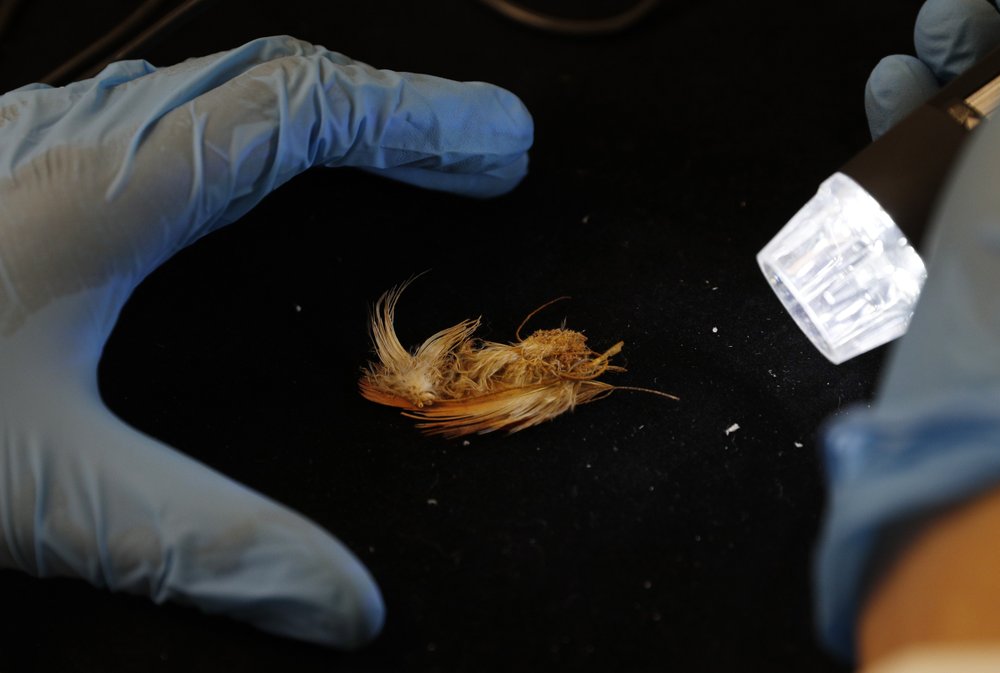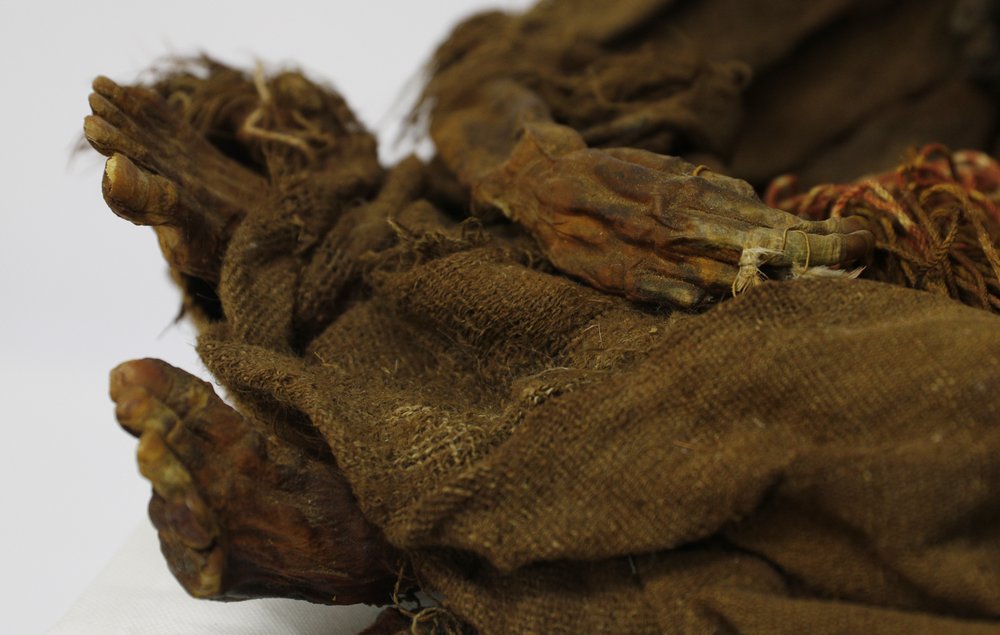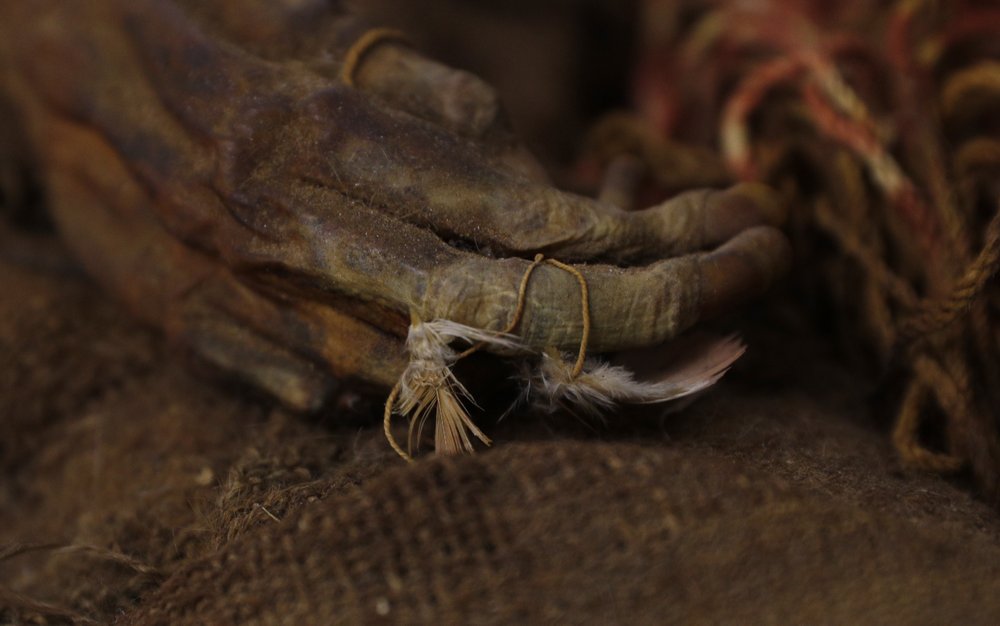



The remains nicknamed “Nusta”, with details. Credit: Yuan Karita/AP Photo.
“Nusta” and the Ongoing Project of Pre-Colombian Bolivian History
These are photographs of excellently preserved remains of a young Inca girl. The remains have been dated to be roughly 500 years old, meaning they are likely pre-Columbian. The remains of the girl have been nicknamed “Nusta,” the Quechua equivalent of “princess.” She is thought to have been a member of the upper strata of Inca society, judging from the conditions of her remains and other evidence in her tomb. Dr. William Lovis, an MSU professor who worked to see the remains returned to Bolivia, clarifies that researches do not know whether “Nusta” was actually nobility—it is merely a inference.
The remains were extracted in a sight near La Paz, the modern-day capital of Bolivia. The remains were removed through a U.S. consul in 1890 and were later donated to the Michigan State University Museum. The remains were only repatriated in 2019, despite them being of cultural import to Bolivia. “Nusta” is the only case where looted humans remains were returned to Bolivia.
According to Dr. Lovis, “Nusta” is thought to have been a member of the Aymara ethnic group, more specifically, the Pacajes. The modern-day Aymara live in and around Lake Titicaca, as well as parts of Peru and northern Chile. David Trigo, head of the National Archaeology Museum, has said that the museum is conducting DNA to learn more about “Nusta’s” ethnicity.
Director Trigo says the tomb “Nusta” was found in, called a “chullpa,” is associated with the elite members of Inca and Aymara society. In the “chullpa” a variety of other items were found: a clay jar, pouches, maize, beans, coca, and various grasses. Among the theories proposed by researchers, these items may have been meant to aid the girl in the next life, or as offering to a deity. Also suggested that the girl herself may have been a sacrifice, although this remains conjecture. “Nusta” offers a look into the Inca civilization, and the inhabitants of Bolivia before Spanish colonization. “Nusta” also demonstrates the challenge in uncovering the history of indigenous populations. Sites may have been damaged and looted, and even well-preserved artefacts can be difficult to draw information from. Imperial powers often sought to quash local culture meaning that anything that can be learned from artifacts like “Nusta” is exceptionally valuable. Despite this, the Aymara people still exist, and “Nusta” may offer valuable insight into the civilization of their ancestors.
Works Cited:
Carlos, Valdez. “500-Year-Old Mummy Returns to Bolivia,” Associated Press, 20 August 2020, https://apnews.com/57fb37de7c884d0a9d484c8a72ba51d0. Accessed on February 5, 2019.
Solly, Meilan. “500-Year-Old Inca Mummy Repatriated to Bolivia,” Smithsonian Magazine, 22 August 2019, https://www.smithsonianmag.com/smart-news/500-year-old-inca-mummy-repatriated-bolivia-180972966/. Accessed on February 5, 2020.
